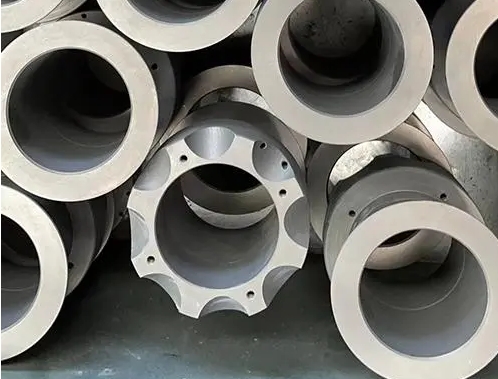
Phosphating treatment is an important process in metal surface treatment that enhances the surface hardness, wear resistance, and corrosion resistance of metals. However, the color change after phosphating processing is a focal point for many enterprises and research institutions. This article will introduce color control and optimization methods for metal phosphating, providing useful references for enterprises and researchers.
I. Introduction to Phosphating Treatment
Phosphating treatment is a process that immerses the metal surface in a solution containing phosphate salts, resulting in the formation of a phosphate film on the metal surface through chemical reactions. This film has the characteristics of enhancing the surface hardness, wear resistance, and corrosion resistance of the metal. During the phosphating process, changes occur in the microstructure and chemical composition of the metal surface, which ultimately lead to color changes.
II. Color Changes after Metal Phosphating
The color changes after metal phosphating are influenced by various factors, including the type of metal material, phosphating solution composition, treatment temperature, and time. Generally, the color of the metal surface after phosphating processing will darken. The specific color depends on the formula of the phosphating solution and process parameters. For example, steel materials typically exhibit a gray or bluish gray color after phosphating, while aluminum and its alloys may appear light gray or dark gray.
III. Color Control and Optimization Methods
- Selecting an Appropriate Phosphating Solution Formula
Different phosphating solution formulas have different treatment effects on metal surfaces, so it is necessary to select an appropriate phosphating solution formula for achieving the desired color. For metal surfaces that require a light color, a phosphating solution with less intense color can be selected; for metal surfaces that require a dark color, a phosphating solution with more intense color can be selected.
- Adjusting Process Parameters
Process parameters such as temperature, time, and concentration significantly impact the color of metal surfaces after phosphating. By adjusting these parameters, the treatment speed and depth of the metal surface can be controlled, thereby achieving color control. Generally, increasing temperature, extending treatment time, and increasing concentration will all result in darker colors.
- Improving Phosphating Solution Stability
Some phosphating solutions contain unstable components that can easily precipitate or change color. By improving the stability of the phosphating solution, the color change during use can be avoided. For example, adding stabilizers can slow down the decomposition rate of various components in the phosphating solution and maintain its original color.
- Strengthening Post-treatment Maintenance
After metal phosphating processing, it is essential to strengthen maintenance and upkeep to prevent color changes due to external factors. For example, regular cleaning and maintenance can maintain the metal surface's cleanliness and luster; avoiding friction with hard objects can prevent scratching and discoloration; and avoiding prolonged exposure to air can prevent oxidation and corrosion.
IV. Conclusion
Color control and optimization methods for metal phosphating are crucial for enhancing product quality and competitiveness. By selecting an appropriate phosphating solution formula, adjusting process parameters, improving phosphating solution stability, and strengthening post-treatment maintenance methods, effective color control after metal phosphating processing can be achieved, further enhancing product quality and value added.





 Customer service 1
Customer service 1  Customer service 2
Customer service 2